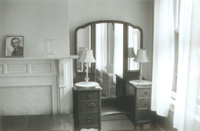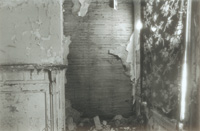Duane Michals
Getting To The Heart With A Wry Eye
"The keyword is having
something to express," says Duane Michals. "When you look
at my photographs you are looking into my mind." |
|||
Modes Of Expression
|
|||
The Sage As Fool |
|||
His Own Path A Life Of Work |
|||
This Old House |






































